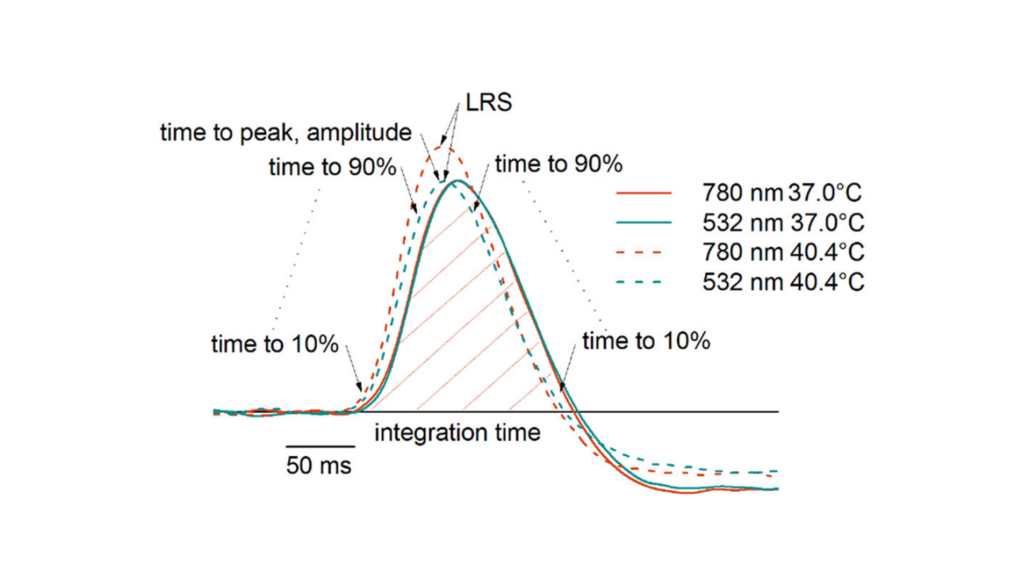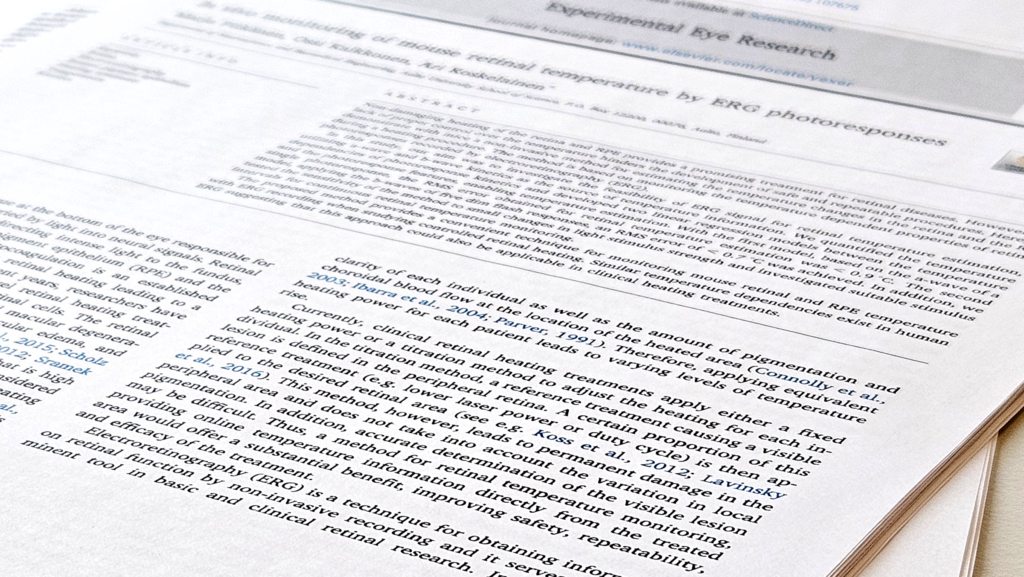The paper discusses a new heat treatment for the retina that uses a special method, based on the bioelectrical response of retina to light, to control the retinal temperature during laser-induced heat treatment, ensuring it is safe and effective. The treatment involves gently heating the retina to activate a protective response without causing harm. The study shows promising results, indicating that this method could help to treat eye conditions in a controlled and personalized way while minimizing risks.
More specifically, the study demonstrates the feasibility of focal ERG-based thermal dosimetry to control retinal laser treatments in vivo pigs and shows promising evidence that the proposed non-damaging treatment could help in the management of common retinal diseases through activation of three main cellular defense mechanisms: heat shock protein production, autophagy, antioxidant system. The presented treatment could be beneficial in the treatment of diseases such as AMD, where the defense systems of aged cells are insufficient to cope with sustained oxidative stress.
Amirkavei, M. et al. Novel subthreshold retinal laser treatment with ERG-based thermal dosimetry activates hormetic heat response in pig RPE in vivo. bioRxiv 2022.11.29.518343 (2022) doi: https://doi.org/10.1101/2022.11.29.518343
Abstract:
Boosting natural mechanisms to retain cellular homeostasis and combat oxidative stress by inducing a hormetic heat shock to retinal pigment epithelium with non-damaging transpupillary laser heating, i.e., with subthreshold laser treatment (SLT), has been suggested as a promising therapeutic target for many retinal diseases, including age-related macular degeneration. However, the therapeutic temperature window for the treatments is narrow and thermal dosimetry is unavailable. Here we introduce an SLT modality where the retinal temperature is monitored with electroretinography (ERG)-based thermal dosimetry and demonstrate its feasibility with anesthetized pigs. In 60-second treatments with 810 nm laser, the ED50 peak temperature for visible lesion generation was 48°C and the relative temperature determination error was below 10% from the temperature increase. Heat shock protein expression increased, and autophagy was activated at 44.2 °C and no signs of oxidative stress or apoptosis emerged at 44.2 °C or 46.5 °C. The demonstrated method permits a controlled activation of intracellular chaperones and waste clearance in RPE cell with a clear temperature margin for adverse events. In the clinical setting, ERG-based dosimetry would allow safe and personalized SLTs for retinal diseases currently lacking effective treatments.

